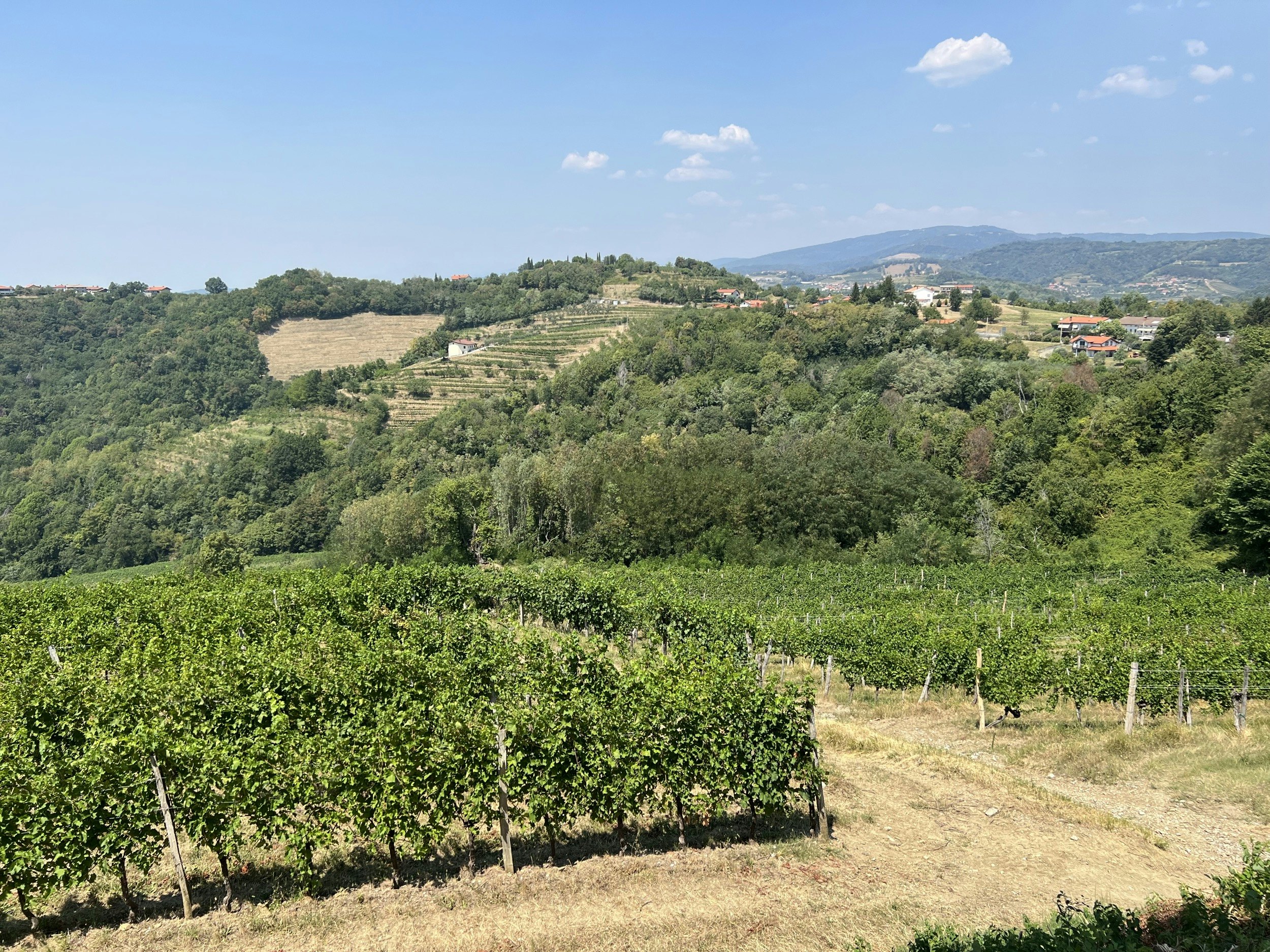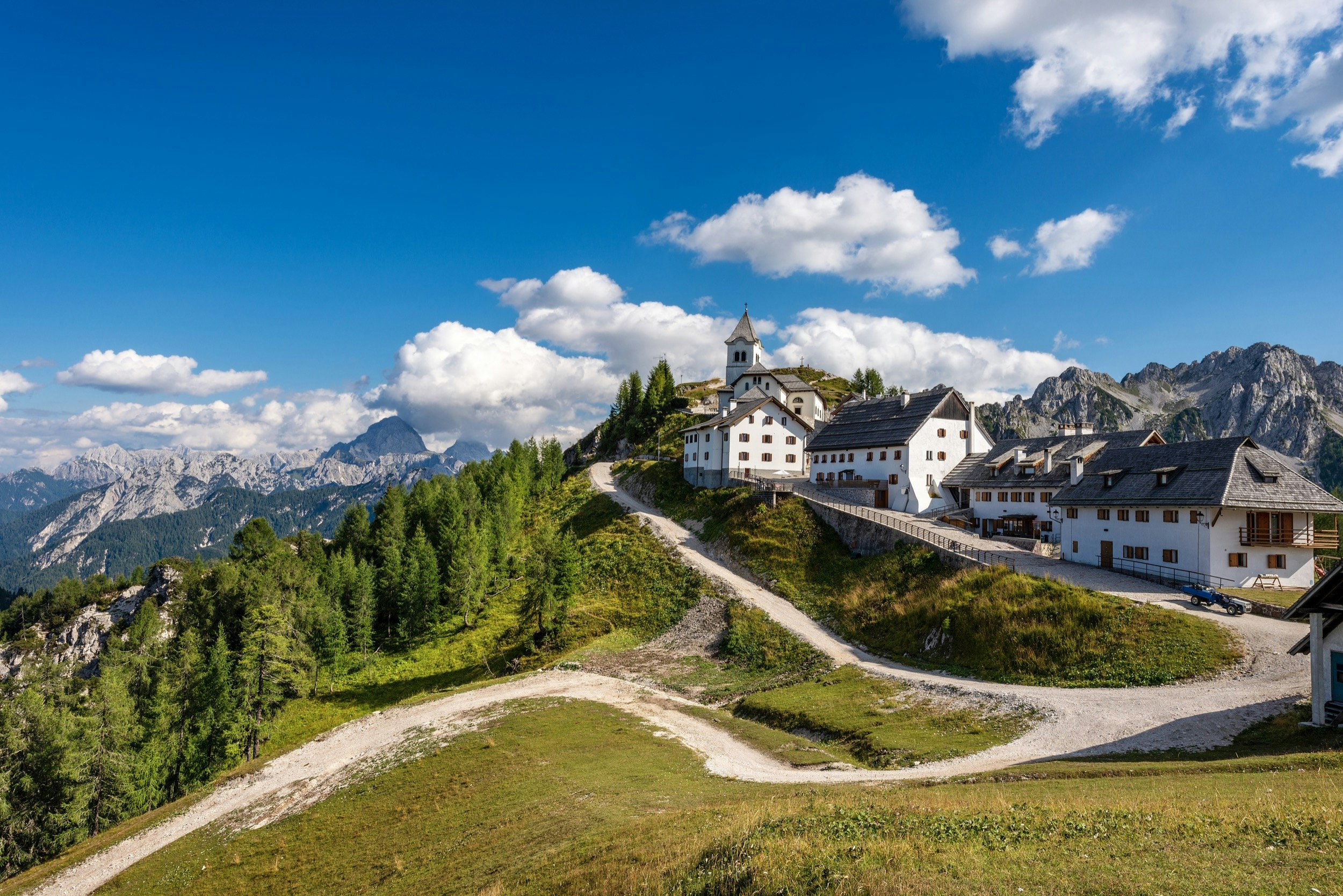
A week in Friuli Venezia Giulia, Italy’s mosaic
Sponsored by

May 19, 2023 • 7 min read

In the Friuli Venezia Giulia region of Italy, the diversity of landscapes and rich history meld to create a magical, one-of-a-kind region with something for every traveler © Nicola Simeoni / Shutterstock
Hidden in the far northeastern corner of Italy, the region of Friuli Venezia Giulia has been a crossroads for centuries. Bordered by Austria and Slovenia, the region stretches from the Alps and the Dolomites in the north to the Adriatic sea almost an hour’s drive to the south, where populations from the Romans to the Austro-Hungarians have left their mark on its cultural and artistic heritage.
The result of these diverse terrains and cultural influences is a complex mosaic of opportunities – everything travelers love about Italy in one compact and easy-to-travel region. Come with us as we hit the road in this under-the-radar region for a week of natural beauty, historic sites, and gastronomic delights.

Day 1 – Capital city splendor
Start your trip in Friuli Venezia Giulia’s capital city, Trieste, on the Adriatic Sea. Here, stately neoclassical buildings and the large Piazza dell'Unità d'Italia reflect the region’s Austro-Hungarian past.
Today Trieste is a melting pot of influences from across its neighboring borders and over centuries of Hapsburg heritage. Wander through the city marveling at the varied architecture, perusing the city’s ample antique and used book shops, and taking in the sweeping views from Castello di San Giusto.

When you’re ready for a break, make for a café. But don’t rush it – unlike other parts of Italy that have a stand-at-the-counter coffee culture, the Triestini enjoy their pick-me-ups leisurely. In fact, the locals here are said to consume more coffee than any other population in Italy.
In the afternoon take the bus to Castello Miramare, a 19th century Hapsburg residence in a stunning seaside location, complete with ornate decor and manicured gardens.

Day 2 – Roman history & beach time
Rent a car and drive west to Aquileia, once one of the largest and most important cities of the Roman Empire and now a UNESCO-listed site. Much of ancient Aquileia has yet to be excavated, but the remains of complexes such as the Forum, river port, and cemetery are visible today. The Museo Archeologico Nazionale offers a comprehensive overview of the former city and information about Roman life at that time.
The show-stopper in Aquileia is the Basilica di Santa Maria Assunta which contains one of the largest mosaic floors still visible from Roman times. Walking along the elevated glass flooring over the original mosaics, visitors can marvel at the early Christian art, including detailed human faces, sea life, and Old Testament stories.

After visiting Aquileia it’s time to escape for an afternoon spent on one of Friuli Venezia Giulia’s beaches along the Adriatic Sea. Close to Aquileia, Grado is a historic spa town with expansive beaches, nearby nature preserves, and a promenade for a passeggiata – an evening stroll.
Another sun-drenched option is Lignano Sabbiadoro, a popular resort town with a large marina and plenty of sun umbrellas where you can while away an afternoon. The long golden peninsula is bordered by the Adriatic Sea, the Tagliamento River and a lagoon, and is filled with more than 1.2 million trees – earning this forested landscape recognition from the prestigious “Tree Cities of the World.”

Day 3 – Wine country
Leave the beach for Friuli Venezia Giulia’s famous Collio wine region. On the way, stop at Palmanova, a fortress city built during the time of the Venetian Republic, masterfully designed as a nine-pointed star. A walk through the city, a UNESCO site, will deposit you at the central Piazza Grande and leave you impressed with its symmetry and design.
Continuing east from Palmanova you enter the wine-producing region of Collio, one of Italy’s best-kept secrets. The countryside is dotted with vineyards everywhere you turn from many small producers that create top-notch white wines in the region’s distinct microclimate. Because of the lower volume of production, the wines are prized as a niche market. Enjoy a chilled glass of Friulano, Ribolla Gialla or Istrian Malvasia as you gaze across the vines.
To fully experience the beauty of the Collio, book a stay at a countryside agriturismo or B&B near Cormons, the center of this wine-making region. Another great option is Gorizia, a charming city with Astro-Hungarian flair on the border of Slovenia. Along with Nova Gorica, Gorizia will be designated the European Capital of Culture by the EU in 2025.

Day 4 – Historic cities and gastronomic delights
Spend the morning in the city of Udine, a hub of gastronomic and cultural delights. Once part of the Venetian Republic, Udine boasts well-known frescos by Venetian painter Tiepolo in the Museo Diocesano e Gallerie del Tiepolo and Oratorio della Purità, and Venetian design is evident in the city’s main Piazza della Libertà.
Udine is a great place to find local Friulian cuisine like frico, a crispy melted cheese and potato dish, and cjarsons, stuffed pasta with ricotta, spices, and dried fruit. Look for the famous prosciutto cured in the nearby town of San Daniele (many prosciutto producers there are also open to visitors).
In the afternoon, explore Cividale del Friuli – a picturesque town with a well-preserved medieval core about 15km east of Udine. Cividale del Friuli was named a UNESCO World Heritage Site for its important Lombard art and architecture. Don’t miss the Museo Cristiano which contains some of the most important pieces of 8th century Lombard art as well as the Tempietto Longobardo, arguably the most important example of Lombard architecture still standing today.
Finally, no visit to Cividale del Friuli is complete without crossing over the Ponte del Diavolo to get a full panoramic view of town.

Day 5 – Medieval & Renaissance artistry
Italy has a rich history of mosaic art, and the Scuola Mosaicisti del Friuli in Spilimbergo in the province of Pordenone continues this tradition today. Founded more than 100 years ago, students from around the world now study Roman and Byzantine mosaic traditions and apply their skills in restoration work and modern art installations globally.
Visitors can tour the school and see the works of art on site. The school is itself a canvas for the students’ work – with every floor, staircase, bathroom, wall and pillar covered in different styles of mosaic.
Beyond mosaics, Spilimbergo has notable Renaissance-era art including the ornately frescoed exterior of Palazzo Dipinto and frescoes inside the Duomo.
In the afternoon drive a short distance to Valvasone, a walled medieval village designated as one of Italy’s most beautiful small towns. A 12th century castle sits at the heart of the town. Each September history comes alive with knights and squires, artisans and minstrels, during the annual medieval festival.

Day 6 – Natural adventures
The northern part of Friuli Venezia Giulia is resplendent with mountain peaks and lakes, and the last day of the itinerary (or more if time allows!) provides time to explore this stunning natural beauty. Travelers can choose from adventures in three distinct mountainous zones.
The Friulian Dolomites are a UNESCO World Heritage Site and home to the Friulian Dolomites Regional Nature Park – a paradise for hiking, trekking and mountaineering. Here, mountain huts offer access to abundant wildlife and turquoise rivers such as the Cellina, the Medua and the spectacular alpine Tagliamento.
The Carnic Alps are home to some of the most famous villages and mountain peaks in the region. Sauris, an alpine village tucked in a lush mountain valley and nominated as one of the best tourism villages by the UN World Tourism Organization in 2022, is well-known for its production of speck (preserved pork), cheese, and craft beer.

Monte Zoncolan is a renowned alpine peak known for its summer cycling and trekking options and winter skiing, and can be reached via tram from the village of Ravascletto, making the panoramic views accessible to all. Also in the Carnic Alps are the Malga and Alm Desired Experience (MADE) routes – a nine-stage trekking route and a seven-stage cycling route connecting mountain huts and historic sites, both showcasing the natural beauty of the region.
Furthest to the east, the Julian Pre-Alps are part of the Julian Pre-Alps Regional Natural Park, a region that hosts biogeographical regions from the Mediterranean to the Alpine, resulting in a rich mosaic of biodiversity. The 43-stage Alpe Adria Trail that starts in Austria and runs to the Adriatic sea crosses through the Julian Pre-Alps, providing splendid single or multi-day trekking options.
The northern part of Friuli Venezia Giulia is a paradise for summer sports, but is equally as popular in the winter, with the mountainous regions boasting several alpine ski areas.

Like a mosaic, each individual part of Friuli Venezia Giulia is compelling in its own right, but when combined together they form a beautiful composite of experiences and opportunities. Here, the diversity of landscapes and rich history meld to create a magical, one-of-a-kind region with something for every traveler.
Sponsored by Friuli Venezia Giulia
As a travel entertainment and inspirational media outlet, we sometimes incorporate brand sponsors into our efforts. This activity is clearly labeled across our platforms.
This story was crafted collaboratively between Friuli Venezia Giulia and Lonely Planet. Both parties provided research and curated content to produce this story. We disclose when information isn’t ours.
With sponsored content, both Lonely Planet and our brand partners have specific responsibilities:
-
Brand partner
Determines the concept, provides briefing, research material, and may provide feedback.
-
Lonely Planet
We provide expertise, firsthand insights, and verify with third-party sources when needed.















